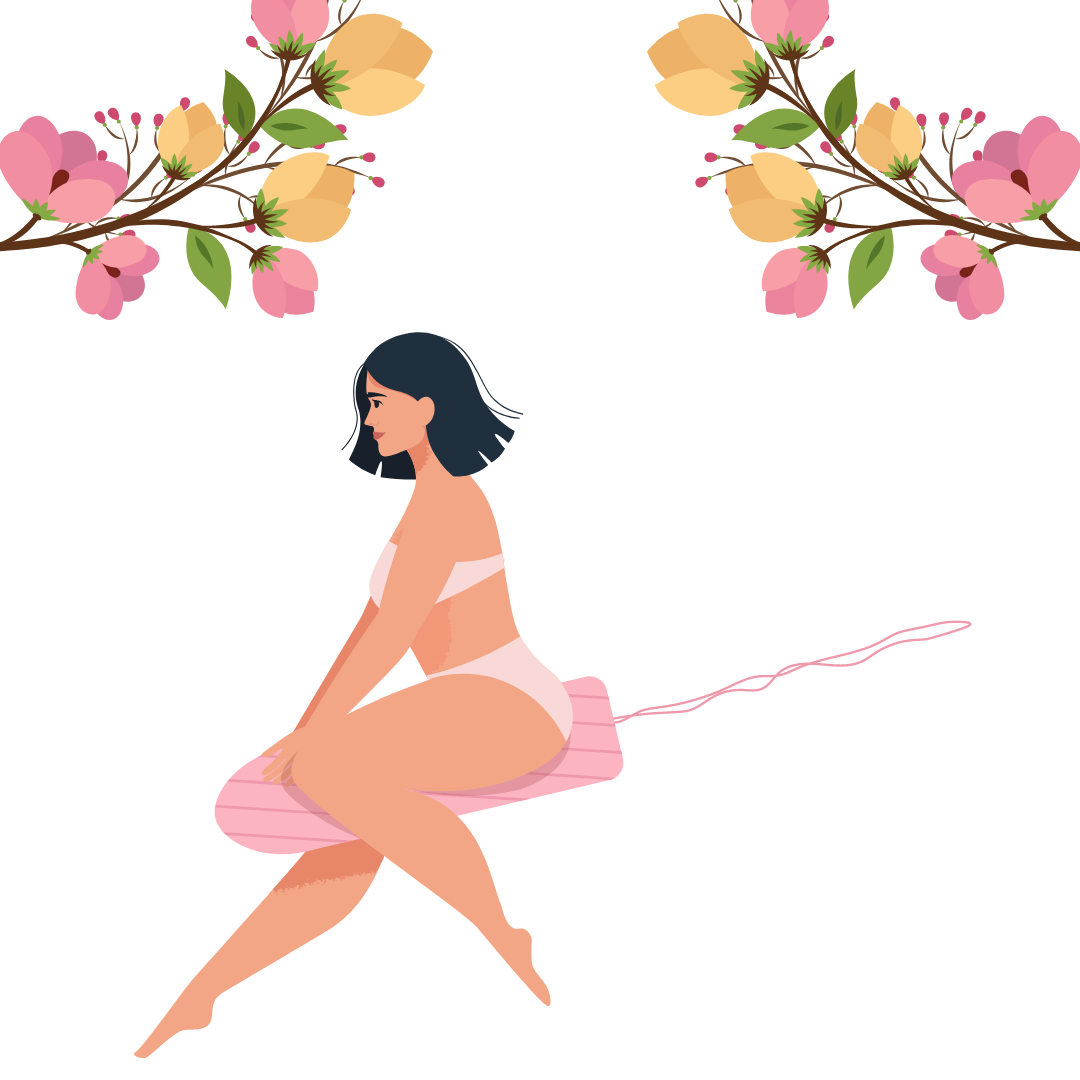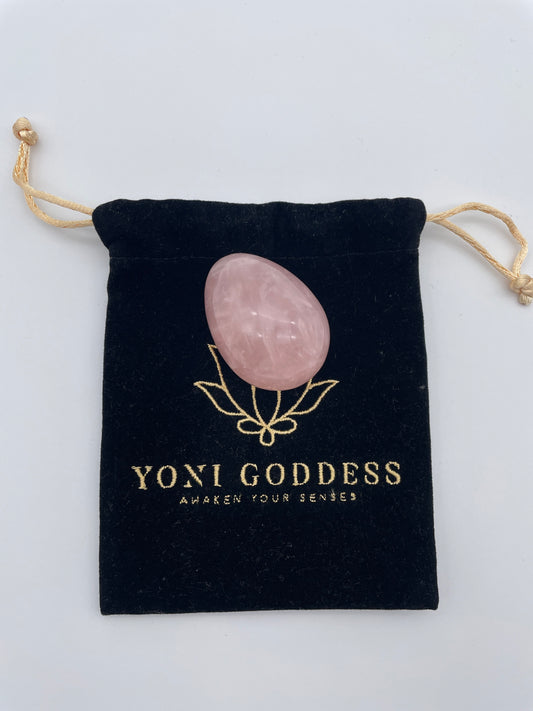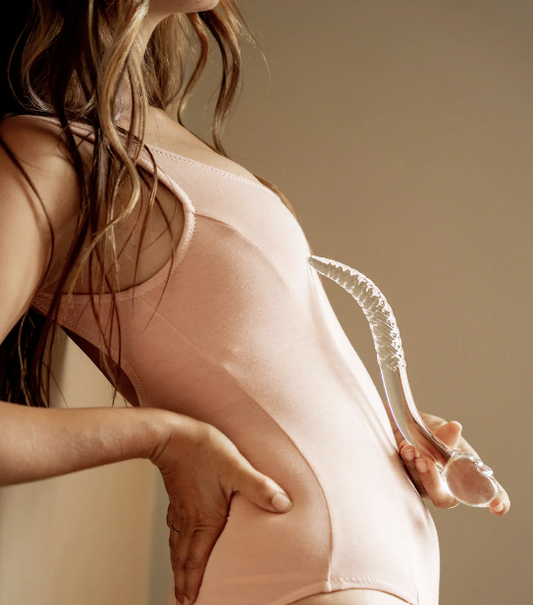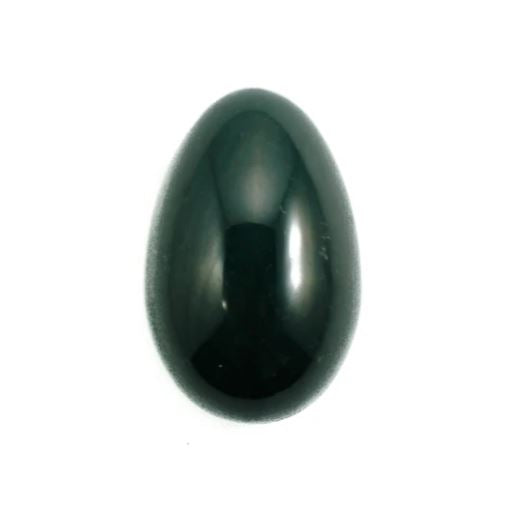What does the information in your cycle mean?
Every aspect of your menstrual cycle can tell you something about your current health. So, what does a healthy period look like overall?
Duration:
In general, a period should last about 3 to 6 days.
Length:
A typical menstrual cycle is about 28 days long. A healthy menstrual cycle is regular and between 25 and 35 days long.
Blood:
The blood quality should be clear and without lumps or mucus.
Blood flow:
The blood flow should go from light to heavy to light.
Energy level:
During menstruation, it is normal to have less energy. The body is cleansing itself, and this is a time for reflection and rejuvenation. Take rest and choose more relaxing activities such as walking, reading, listening to music and yoga nidra. There should be no pain during menstruation. A slight feeling of pressure at the beginning of menstruation is normal.
Mood swings:
The week before your period, you may experience some mood swings. In fact, this phase intensifies the emotional imbalances that are already present. It reveals the underlying feelings and beliefs. Most of us will experience these mood swings, and this phase is just a chance to look at these feelings and to heal on a deeper level.
Many women still believe that menstrual problems such as cramps, PMS, or chronic fatigue are normal.
However, menstruation is a natural event that should go without any major problems. Your menstrual cycle is like a mirror: each month it reflects your current overall health. Menstrual disorders are actually a sign of imbalances. It is very important to listen to these body signals, rather than trying to suppress them with painkillers or synthetic hormones.
With the Ayurvedic Cycle Tracker, I hope to inspire you to gain a deeper understanding of your menstrual cycle. It's time to let go of old beliefs, relieve repressed emotions, and reclaim our power as cyclical beings.
Our menstrual cycle can teach us a lot about our cyclical nature and help us live more in harmony with ourselves. Instead of fighting so hard to fit a system that is no longer sustainable for our health, it is time to embrace all that it means to be a woman, including the different phases of the menstrual cycle.
Use the Ayurvedic cycle tracker to become more aware of your cycle, try to recognize patterns and learn to listen to your body's signals during the different phases of the menstrual cycle.

Our menstrual cycle is closely linked to the lunar cycle.
This shows how connected we really are to nature. Our bodies have an innate wisdom and know the rhythms of nature. It is no coincidence that our menstrual cycle, which has an average of 29.5 days, is the same as the time it takes for the moon to orbit the earth. Women, and especially our endocrine system, are closely connected to the moon. Men also have an endocrine cycle, but this seems to be based around the sun.
Just as the moon affects the tides of the ocean, it also affects our internal tides. The menstrual phase corresponds to the dark moon, a three-day period when the moon is invisible. The new beginning and growth of the follicular phase corresponds to the waxing moon.
The full moon corresponds to ovulation, when fertility peaks. And the luteal phase corresponds to the waning moon, when our energy turns more inward again.
When you look at this from a more scientific perspective, it is the pineal gland along with the pituitary gland that is affected by the light of the moon. As we know, the pineal gland is responsible for producing melatonin, based on the amount of light. More light produces less melatonin, and more darkness produces more melatonin. Research is now showing that melatonin levels affect the production of our sex hormones. One study shows that during menstruation melatonin reaches its peak and during ovulation it becomes lower.
Today, women don't necessarily follow the rhythms of the moon with their menstrual cycles. They all menstruate at different times. There are several possible reasons for this. First of all, many women don't have a natural cycle due to hormonal birth control. Second, when you live in the city, there's a lot of artificial light pollution that interferes with the moonlight. Other factors that can throw off our menstrual cycle are diet, lifestyle, stress levels, and environmental toxins. There's not necessarily a right or wrong way to menstruate. However, research has shown that women who bleed at the new moon and ovulate during the full moon generally feel more in flow.
Studies also show that conception rates are higher during a full moon.
Living close to nature, eliminating artificial light, and following the phases of your menstrual cycle can potentially align your cycle with that of the moon.
According to Ayurveda, we can classify individuals according to their innate dosha. There are three doshas - vata, pitta and kapha - each of which has specific characteristics.
Usually everyone has some of each dosha, but the dominant dosha represents what a person's characteristics are. The dominant dosha will also be the first to get out of balance.
An unbalanced dosha is always the result of too much of that trait. This can be balanced by dosha-reducing changes in lifestyle and eating habits and balancing yoga practices. Your dominant dosha also affects your menstrual cycle.
When a dosha is unbalanced, this is also reflected in the menstrual cycle.
Vata is responsible for all movement and communication in the body and mind.
Body: Vata types are naturally slim, without much muscular definition. It can be difficult for them to gain weight. After all, they don't have much of the earth element. - Vata types are mobile and flexible, but they can be prone to injuries and joint pain because they lack lubrication. Vata types naturally have drier and rougher skin and dry hair. They often have cold hands and feet. They dislike cold, dry, and windy weather and prefer warm weather.
Energy: They like to be active, but they also lose their stamina easily.
Vata types are usually very talkative and energetic. Although vata types can also overthink everything leading to no decision at all. - Vata types are erratic. They are like the wind. One moment full of energy and the next moment they are tired. Element: Water and Air
Vata menstruation in balance:
Shorter duration of period. Light blood flow slightly irregular
Vata menstruation imbalance:
Very irregular cycle. Light or absent blood flow. Brown
or dark blood. Cramps or pain in the lower back.
Tip for Vata people: eat grounding foods like root vegetables and proteins.
Pitta is responsible for all transformations in the body and mind.
Body: Pitta types are medium built and have good muscular definition. - The skin is soft and warm, but also more susceptible to acne or rashes. The hair is mostly soft and straight, but they tend to go gray or bald earlier in life. The body temperature is generally a little higher. On hot summer days, pitta types usually become more irritable. This can also be shown on the skin. They prefer cooler days. They are more prone to rashes that spread on the skin or inflammation that spreads throughout the body. But they also have an ambition to spread their knowledge or ideas with the world. Energy: They like to be active, but quickly lose motivation.
Element: fire
Pitta menstruation in balance:
Moderate duration of period, moderate blood flow, regular cycle.
Pitta imbalanced menstruation:
Heavy and prolonged menstruation Yellowish, hot or foul-smelling blood. Inflammation, irritability, breast tenderness, acne, migraines or diarrhea.
Tips for Pitta people: avoid spicy and salty foods, eat at regular meals.
Kapha is responsible for structure and stability in the body and mind
Kapha: Body: Kapha types are stronger and heavier built, due to their earth and water elements. They have strong bones and muscles. They tend to be overweight. - Kapha types usually have large eyes and lips, thick hair and smooth, soft skin. When balanced, they have the strongest body and vitality that does not easily get out of balance. However, when kapha is unbalanced, it also takes longer to recover, due to its slow and steady nature.
Although kapha types are slower and find it harder to get going, they have the longest endurance. They are slow but steady.
Element:earth
Kapha tips: eat spicy food, avoid eating too much and only when you are hungry, fasting occasionally.
Kapha menstruation in balance:
Kapha usually has a longer period. Blood Flow - Kapha has a moderate flow. The amount of blood should increase in the beginning and then decrease towards the last few days. When the blood increases, than stops and then increases again, there is probably stagnation in the body. Blood Quality - Clots or mucus in the blood are signs of kapha imbalances.
Menstrual phase - Dark moon
- Phase from 1st day-last day of menstruation
- Less sex hormones, estrogen and progesterone, energy will be lower.
- There is also a decline in the immune system which is why women are more vulnerable to viruses at that time.
- Stress also has an impact on your immune system, which is why it is especially important to reduce stress in the days before and during the menstrual phase.
-
Rest during menstruation, especially the first 2 days. During menstruation, it is normal to feel less energetic as the body cleanses itself. - Eat easily digestible and warm foods, such as soups. Eat smaller amounts than usual. Your agni is lower during menstruation. Avoid heavy foods, such as processed foods and fast food.
Follicular phase - Waxing moon
- Phase: until ovulation
- The follicular phase is like spring: a time of new beginnings and fresh energy.
- During this phase, estrogen rises.
- According to Ayurveda, it is the kapha phase of the cycle. You start building new endometrium and follicles start growing, but your strength and energy also build in this phase.
- This is a creative phase. Write, read, and learn. Set new intentions.
Ovulation - Full moon
- Estrogen peaks during this phase, which brings with it a peak in energy and fertility. Energetically, this phase is about 3 to 4 days, but there are only 12 to 24 hours that you are actually fertile.
- The peak in estrogen causes an increase in cervical fluid, an increase in libido, larger breasts, and shinier skin.
- Most women, when balanced, feel more feminine, sensual, and horny during this time.
- It is a more expressive time where women feel more open to social connections and more open to giving and receiving love.
Luteal Phase - Waning Moon
- The luteal phase is the transition between the most fertile (ovulation) and most cleansing (menstruation) phases of the month.
- It usually takes between 10 and 14 days.
- This is often considered the most challenging phase. According to Ayurveda, this phase is dominated by pitta dosha, due to the increase in progesterone, which is a more pitta-like hormone.
- When there is too much heat in the body, this can lead to more classic PMS symptoms such as irritability, headaches, agitation, and acne on the face.
- Good time for healing as emotions come to the surface. We are also more intuitive during this period.
General tips and advice:
- Follow and track your cycle
- Take your cycle needs into account
- Plan according to your cycle. Schedule most activities, dates, and social life during the ovulation phase. Take it easy for the first few days of your period.
- Yoni steam is fantastic for those who struggle with PMS or irregular cycles. Buy here
.









